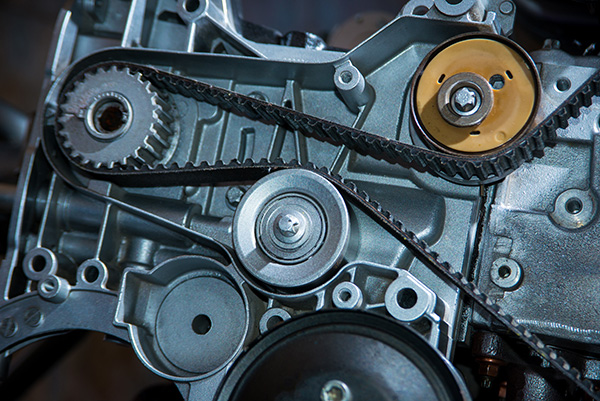
Have you ever wondered what keeps the various components of your car's engine in sync, ensuring smooth operation and optimal performance? Enter the timing belt and timing chain – two essential components that play a crucial role in the engine operation process.
The Timing Belt: A Precision Performer
The timing belt, also known as a cam belt, is a toothed rubber belt that connects the crankshaft and camshaft(s) in an engine. Its primary function is to synchronize the engine's valves' opening and closing with the pistons' movement. As the crankshaft rotates, it drives the timing belt, which in turn rotates the camshaft(s) at precisely timed intervals. This ensures that the valves open and close at the correct moment, allowing air and fuel to enter the combustion chamber and exhaust gases to exit.
The Timing Chain: Built to Last
In contrast to the timing belt, which is made of rubber, the timing chain is constructed of metal links, similar to a bicycle chain. Like the timing belt, the timing chain connects the crankshaft and camshaft(s) and plays a vital role in coordinating the engine's valve timing. However, due to its metal construction, the timing chain is more durable and has a longer lifespan compared to the timing belt.
Key Differences - Material, Lifespan, and Maintenance
Material
The most significant difference between a timing belt and a timing chain lies in their construction materials. Timing belts are made of rubber with embedded fiberglass or Kevlar reinforcement for strength, while timing chains are composed of metal links.
Lifespan
Timing belts typically have a recommended replacement interval, usually between 60,000 to 100,000 miles, depending on the vehicle manufacturer's guidelines. In contrast, timing chains are designed to last the lifetime of the engine and generally do not require replacement under normal driving conditions.
Maintenance
Timing belt replacement is considered a routine maintenance task and is essential to prevent catastrophic engine damage in the event of belt failure. In contrast, timing chains are generally maintenance-free, requiring no regular replacement unless they become damaged or worn due to excessive wear or lack of lubrication.
You Might Also Ask
Why do some engines use timing belts while others use timing chains?
Engines vary in design and manufacturer preference. Some factors include cost, complexity, and maintenance requirements.
How do I know if my vehicle has a timing belt or timing chain?
Check your vehicle's owner's manual or consult a mechanic for specific information about your engine's timing system.
What are the consequences of timing belt or timing chain failure?
Timing belt failure can result in severe engine damage due to valve-piston interference. Timing chain failure may cause engine misfires or loss of power.
Can a timing belt engine be converted to a timing chain or vice versa?
Converting timing systems would require significant engine modifications and may not be feasible or cost-effective.
Can I replace a timing belt or timing chain myself?
Timing belt or chain replacement is a complex task requiring specialized tools and expertise.
Whether it's a timing belt or chain, we can take care of it! The University Chevron team is here to make your ride more reliable and efficient.